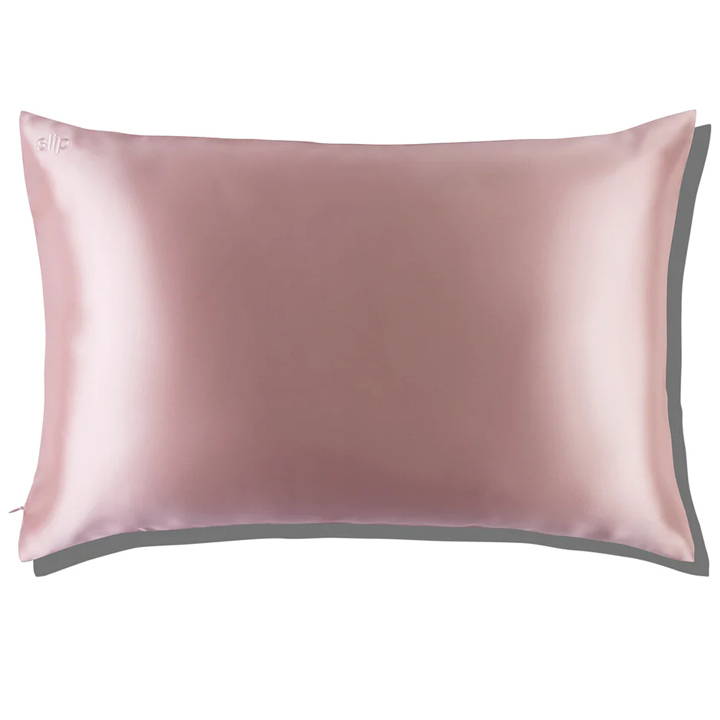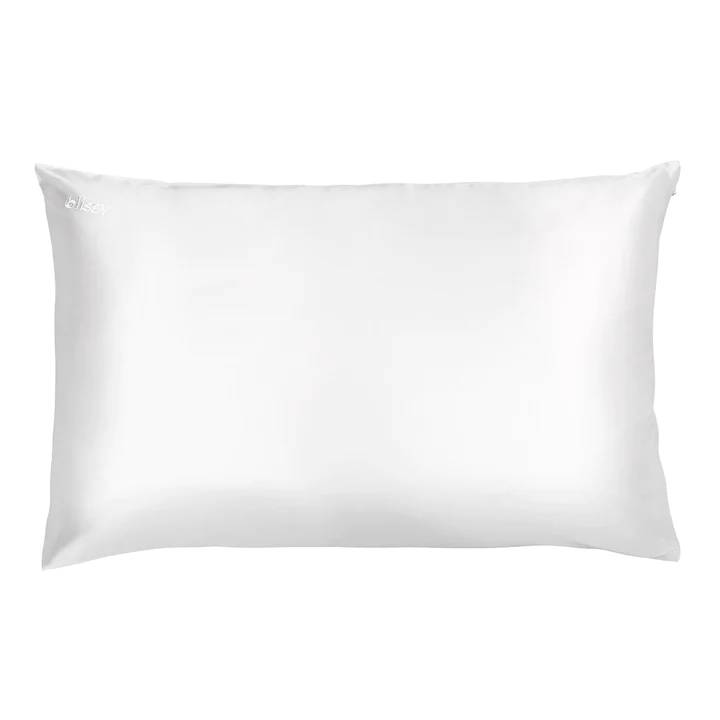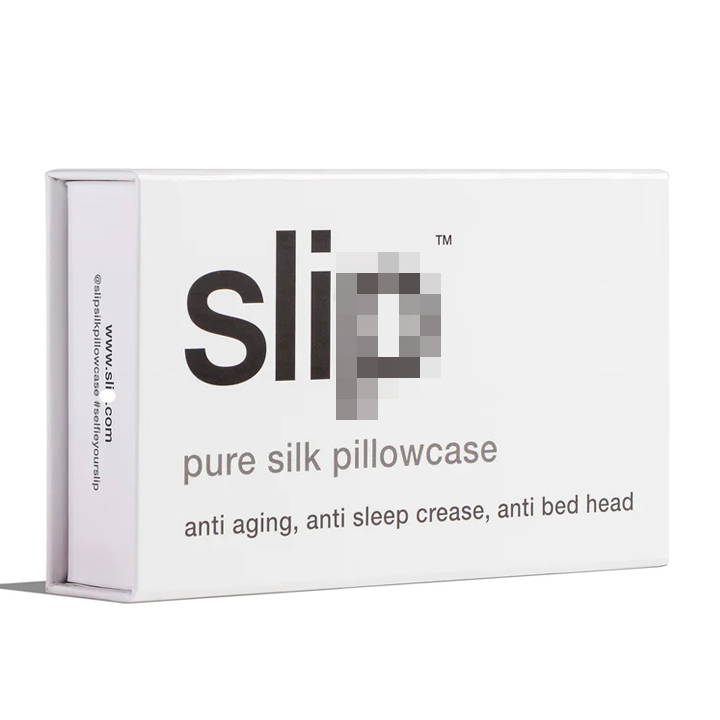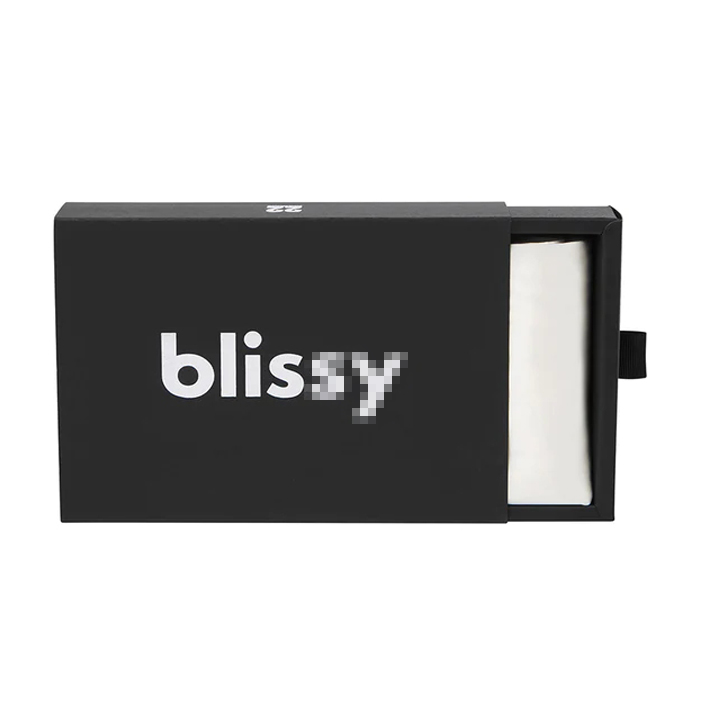Get The Best Christmas Gift! Save Up To 60% Off!
Silk pillowcases are a popular choice for many people due to the numerous benefits they offer. From improved skin health to reduced bedhead, there is no shortage of reasons why someone might choose to invest in a silk pillowcase. However, with such a wide range of prices and claims made by different manufacturers, it can be difficult to know how to choose the right one. In this article, we'll address some of the common questions about silk pillowcases and provide a comprehensive guide on how to choose the right one for you.
The price of a silk pillowcase can vary greatly depending on several factors, including the quality of the silk, the size of the pillowcase, and the brand.
A $9.99 silk pillowcase is likely to be made from lower-quality silk, such as polyester satin, which is a synthetic fabric that mimics the look and feel of silk. Polyester satin is less expensive and less durable than high-quality silk, which is why it is often sold at a lower price.
On the other hand, a silk pillowcase that costs $24.99-$89.99 or more is likely to be made from high-quality mulberry silk, which is considered the finest type of silk. This type of silk is made from the long fibers of the mulberry silkworm and is known for its durability, softness, and shine. High-quality mulberry silk is also more expensive to produce than synthetic fabrics like polyester satin, which is why silk pillowcases made from this material are often sold at a higher price.
Silk has been a symbol of luxury and opulence for centuries, known for its soft, smooth texture and radiant sheen. It's not surprising, then, that many people assume that anything that is labeled as "silk" and sold at a low price must be fake. But is this assumption always true?
First of all, it's important to note that not all silk is created equal. There are several different types of silk, each with its own unique characteristics and price point. For example, mulberry silk, which is the most common type of silk, is known for its high quality and durability and is often more expensive than other types of silk. On the other hand, tussah silk, also known as wild silk, is a less refined type of silk that is typically less expensive than mulberry silk.
Some people have referred to these high-priced silk pillowcases as an "IQ tax," suggesting that they are marketed toward people who are willing to pay more for something simply because it is more expensive. But is this really the case? Let's examine the issue in more detail.
It's important to understand what makes some silk pillowcases more expensive than others. There are several factors that can contribute to the price of a silk pillowcase, including the type of silk used, the quality of the silk, the size of the pillowcase, the brand, and the package. Let's discover how these elements affect the price below:



Brand
Sli*
Bliss*
Promeed
Metarial
Mulberry Silk
Mulberry Silk
Mulberry Silk
Momme
22MM
22MM
23MM
Size
Queen
Queen
Queen
Package



Price
USD89.00
USD74.96
USD27.99
while high-priced silk pillowcases may seem like an "IQ tax" to some people, this is not necessarily the case. Ultimately, the choice of whether or not to invest in a high-priced silk pillowcase comes down to personal preference and individual needs and circumstances.
Silk pillowcases have gained popularity in recent years due to their claimed benefits for skin and hair. However, some people may be hesitant to invest in a silk pillowcase due to the high cost of many options on the market. The good news is that there are indeed cost-effective silk pillowcases available, and it is possible to find a high-quality product that won't break the bank.
Promeed 23mm silk pillowcase price from USD37.99
Here are also four tips for finding a cost-effective silk pillowcase.
Look for discounts and sales: Many retailers offer discounts and sales on silk pillowcases, so it's worth keeping an eye out for these promotions.
Consider alternative types of silk: There are several types of silk, including mulberry silk, which is considered to be the highest quality. However, there are also less expensive options, such as Tussah silk, that can provide similar benefits for a lower cost.
Avoid top brand-name products: Top brand-name products can be more expensive due to the costs associated with marketing and promotion. Consider purchasing a product from a lesser-known brand or an independent seller to save money.
Check customer reviews: Before making a purchase, it's a good idea to read customer reviews to get an idea of the quality of the product and to see if it's worth the price. This can help you to make an informed decision and to avoid overspending on a product that may not be worth the cost.
It's worth noting that the quality of a silk pillowcase can have a big impact on the benefits it provides, so it's important to choose a product that is well-made and made from high-quality silk. By following these tips, you can find a cost-effective silk pillowcase that meets your needs and budget.
Identifying silk can be a challenge, especially if you're not familiar with the characteristics of the fabric. However, there are several methods you can use to determine if a product is made from silk or a different material. Here are some tips for identifying silk easily and truthfully.
Check the label: The easiest way to determine if a product is made from silk is to check the label. Most products that are made from silk will have a label that indicates the material used. If the label says "100% silk," then the product is likely made from pure silk. If the label says "silk blend," then the product is likely made from a mixture of silk and another fabric.
Look at the texture: Silk has a distinctive texture that is different from other fabrics. It has a smooth, soft feel that is often described as "slippery." If you run your fingers over the fabric, it should feel smooth and silky, and the fabric should glide easily over your skin.
Examine the weight: Silk is a lightweight fabric that is much lighter than cotton or polyester. If you hold the fabric up to the light, it should be lightweight and have a delicate, airy quality.
Check the sheen: Silk has a natural sheen that is caused by the way the fibers reflect light. If you hold the fabric up to the light, it should have a subtle shine that is different from other fabrics.
Burn test: One of the most reliable ways to determine if a fabric is silk is to perform a burn test. Simply take a small piece of the fabric and hold a lighter to it. If the fabric is silk, it should produce small ash when burned, and the ash should be crisp and brittle. If the fabric is synthetic, it will melt and produce a sticky residue.
It's important to keep in mind that not all silk is the same. Different types of silk, such as mulberry silk and Tussah silk, can have different properties and characteristics, so it's always a good idea to familiarize yourself with the different types of silk and their unique qualities.
Silky fabric and silk fabric are not the same. While silky fabric may have a similar feel to silk, it may not have the same be benefits as a genuine silk pillowcase. Silk pillowcases are made from natural silk fibers and have been known to help with reducing wrinkles and promoting healthy skin. It's important to consider your needs and preferences when choosing between a silky or a silk pillowcase.
Some silky fabrics may produce dust, so it's important to consider the material if you have asthma. Always check the material before purchasing to ensure it's hypoallergenic
Silky fabrics like Satin and silk are often compared in terms of their texture and benefits for hair, as both are known for their smooth, soft, and gentle qualities. Some people believe that satin is a good alternative to silk, as it can be more affordable and easier to care for. However, silk is generally considered to be the more luxurious option, as it is a natural fiber and has a softer, smoother texture.
Silk is a great choice for anyone who wants to keep their hair tangle-free and look its best. Its soft texture, ability to reduce frizz, prevention of split ends, and hypoallergenic properties all make it a great option for those who want to maintain healthy, beautiful hair. Whether you are looking for a luxurious night's sleep or just want to keep your hair looking its best, a silk pillowcase is a great investment that is sure to deliver results.
For people with asthma, controlling dust and allergens in their environment is an important consideration. Many asthma sufferers have asked whether all silky fabrics will not produce dust, and this is a valid concern.
Dust mites: Dust mites are a common cause of asthma symptoms, and they can live in many different types of fabrics. Unfortunately, not all silky fabrics are immune to dust mites. Some silky fabrics may be treated with chemicals that can repel dust mites, but others may not be, so it is important to check the label or do research before purchasing a silky fabric product.
Synthetic silky fabrics: Some silky fabrics are made from synthetic materials, and these can be a source of dust and allergens. Synthetic silky fabrics may not be as durable as natural silky fabrics(such as mulberry silk), and they may break down over time, releasing tiny fibers into the air that can cause asthma symptoms.
Natural silky fabrics: Natural silky fabrics, such as pure silk, are much less likely to produce dust and allergens than synthetic silky fabrics. Pure silk is naturally hypoallergenic, and it is less likely to cause skin irritation or allergic reactions. Additionally, silk fibers are naturally smooth and lustrous, and they do not absorb moisture, which helps to reduce the risk of dust mites and other allergens.
In conclusion, not all silky fabrics are dust-free, and it is important to be aware of the potential sources of dust and allergens when choosing a silky fabric product. Natural silky fabrics, such as pure silk, are a good option for those with asthma, as they are less likely to produce dust and allergens.
Natural silk: Natural silk, made from the cocoons of silkworms, is considered to be one of the most hypoallergenic fabrics available. It is free from harmful chemicals and dyes, and it is naturally resistant to dust mites and other allergens.
Synthetic silky fabrics: Some silky fabrics are made from synthetic materials, and these can be a source of allergens. Synthetic silky fabrics may contain chemicals or dyes that can cause skin irritation or allergic reactions, so it is important to check the label or do research before purchasing a synthetic silky pillowcase.
Dust mites: Dust mites are a common cause of asthma and allergies, and they can live in many different types of fabrics. However, silk is naturally resistant to dust mites, and it is a great choice for those who are concerned about dust mites and other allergens.
Natural silk is one of the most hypoallergenic fabrics available, and it is naturally resistant to dust mites and other allergens.
Judging the quality of silk can be a difficult task, especially if you're not familiar with the material. However, here are some of the key factors you can consider when evaluating silk:
Fiber thickness, Shine, Strength, Dye quality, Weight, Texture, Weave, Creases, Price
19mm, 22mm, 25mm, and 30mm in the context of silk fabric would likely refer to the thickness or weight of the fabric.
Silk fabric is commonly sold based on its weight in millimeters, with 19mm, 22mm, 25mm, and 30mm being some of the more common weights. This measurement refers to the weight of a 100-yard bolt of the fabric, which is used to determine the overall quality and durability of the fabric.
Typically, the higher the weight in millimeters, the thicker and heavier the fabric will be. Thicker and heavier silk fabrics are generally more durable and long-lasting, but they may also be more difficult to handle and work with.
It is important to consider the weight of silk fabric when choosing a fabric for a particular project, as it can affect the draping, handling, and overall appearance of the final product.
The momme weight of silk is a commonly used measurement for determining the quality of silk fabric. But does the momme number really determine the quality of silk? The answer is not that simple. The momme weight is just one of several factors that can impact the quality of silk.
Other factors that can impact the quality of silk include the type of silk used, the way the silk is woven, and the finishing processes used to treat the fabric.
For example, some types of silk, such as mulberry silk, are considered to be of higher quality than other types of silk because they have a longer, stronger fiber that can be woven into a finer fabric. Similarly, some finishing processes, such as sand washing, can improve the quality and feel of silk by giving it a softer, more luxurious texture.
The momme weight of silk is a commonly used measurement to determine the quality of silk fabric. However, determining the best momme weight for your needs is a matter of personal preference and the specific use of the silk. Here are some factors to consider when choosing the right momme weight for your needs:
Durability: Generally, the higher the momme weight, the more durable the fabric will be. If you need a silk pillowcase that will last for a long time, you may want to consider a higher momme weight.
Texture: The momme weight can also affect the texture of the silk. Lighter momme weights tend to have a lighter, more delicate texture, while heavier momme weights tend to have a thicker, heavier texture.
Personal preference: Ultimately, the best momme weight for you will depend on your personal preferences. Some people may prefer the lighter, more delicate feel of a lower momme weight, while others may prefer the thicker, more luxurious feel of a higher momme weight.
OEKO-TEX 100 certification is a system that assesses the level of harmful substances in textiles and ensures that the product is safe for human use. When choosing a silk pillowcase, it's important to look for this certification because it provides assurance that the product you're using is free from harmful chemicals that can be harmful to your health.
A manufacturer's reputation is important when choosing a silk pillowcase for several reasons:
Quality control: A reputable manufacturer is likely to have strict quality control measures in place to ensure that the silk pillowcases they produce meet certain standards of quality.
Durability: A well-established manufacturer is likely to have a track record of producing products that last for a long time.
Trustworthiness: Choosing a product from a reputable manufacturer can give you peace of mind that you are purchasing a genuine product and not a low-quality knockoff.
Different countries have different standards for silk production and the quality of silk can vary greatly depending on the country of origin. For example, silk from China and India is considered to be some of the finest in the world, while silk from other countries may not be of the same quality.
In conclusion, choosing the right silk pillowcase requires careful consideration of your needs and preferences, as well as a thorough understanding of the different factors that determine quality. By considering the price, the materials used, the certifications, the manufacturer's reputation, and the country of origin, you can find the perfect silk pillowcase to meet your needs and promote healthy skin and hair.